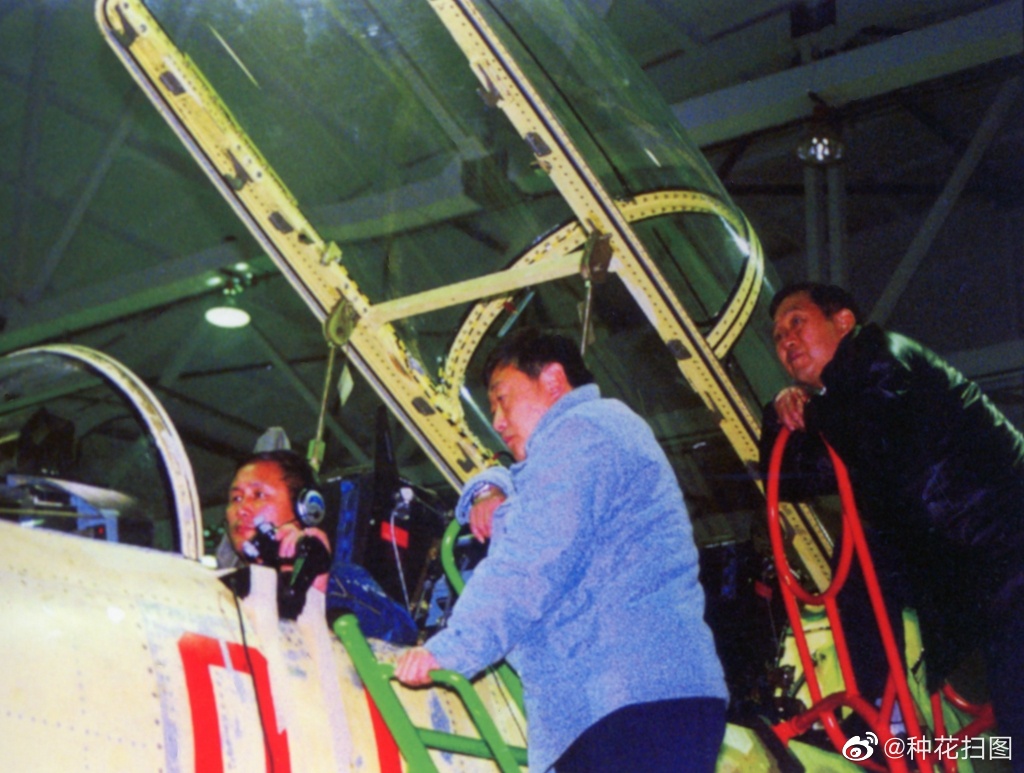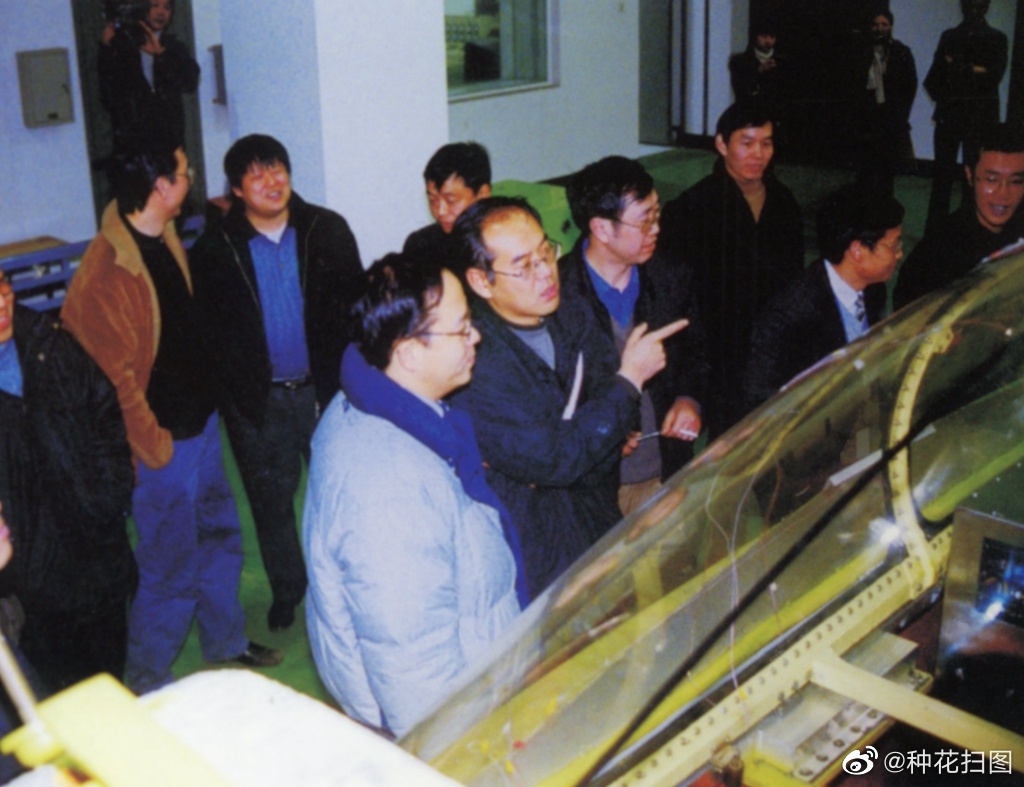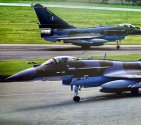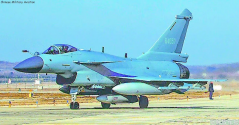Pakistani SFA?This report also has it that this jet only has pulse doppler radar.
You are using an out of date browser. It may not display this or other websites correctly.
You should upgrade or use an alternative browser.
You should upgrade or use an alternative browser.
J-10 Thread IV
- Thread starter Jeff Head
- Start date
I believe it was mentioned Shilao in one of his shows examining this report and pointed out specifically in that report it says "Type 1473H Pulse-doppler radar", which was the rumored designation for the J-10A radar.I mean, being an AESA radar and a pulse Doppler radar is hardly mutually exclusive.
In the past, radars were called "pulse Doppler" because it was a relatively new capability. But that function/technique is standard to many radars now (including AESAs), so it is rare that a radar is called by "pulse Doppler" as its most defining trait.
For J-10C, it would be reasonable to call it a pulse Doppler radar in the sense that it is a "multimode, pulse doppler AESA radar".
I tried looking for that in the post, but I couldn't find anything about the radar model designation. So I could have gotten this report mixed up with something else.
I believe it was mentioned Shilao in one of his shows examining this report and pointed out specifically in that report it says "Type 1473H Pulse-doppler radar", which was the rumored designation for the J-10A radar.
Well we don't know either way because the article doesn't specify it.
However, we clearly know the PAF J-10Cs are equipped with AESA, and it's technically correct to say that J-10Cs radar is a pulse Doppler radar because it IS a pulse Doppler radar.
So I'm not sure what the big deal is.
At worst it's a case of "technically true".
I believe it was mentioned Shilao in one of his shows examining this report and pointed out specifically in that report it says "Type 1473H Pulse-doppler radar", which was the rumored designation for the J-10A radar.
I tried looking for that in the post, but I couldn't find anything about the radar model designation. So I could have gotten this report mixed up with something else.
That was from a table compiled by the magazine writer though, not from the actual interview. I am almost 100 percent certain that they got the radar designation from Wikipedia. Chinese radars no longer follow the Type 1xxx format.
Maybe this will be helpful:
What Blitzo wrote above - multimode AESA pulse-Doppler - has four distinct characteristics of a radar:
The most recent development is in the type of antenna which originally had the traditional parabolic dish and later a slotted antenna which are both mechanically scanned arrays. Modern radars have electronically scanned arrays which shape the beam by phase shifting and can be both passive and active. The difference between passive and active array is whether the transmitters in the array are able to change the power, frequency, waveform and phase of the wave (active) or just the phase (passive).
Another important element is that "radar" refers to the entire system not just the antenna.
For example the F-15C currently uses AN/APG-63(v)2 or (v)3 radar which has an AESA antenna giving it more power and resolution but the same general architecture with computers, analysers and interface just with more modern digital elements instead of older ones. However AN/APG-63(v)1 had a mechanically scanned slotted array.
F-16 uses AN/APG-68 radar which is the same general architecture with a mechanically scanned slotted array and it retains that architecture in all versions including (v)9.
Rafale uses RBE radar which has PESA (passive) antenna and replaces it with an AESA (active) antenna in RBE-AA upgrade while retaining the general architecture of the system.
Eurofighter uses CAPTOR radar which uses a mechanically scanned antenna that is a slotted array but then replaces it with an AESA antenna that retains mechanical scanning for wider field of view in CAPTOR-E.
So when you read "Type 1473H Pulse-doppler radar" it can mean many things. Typically it would mean a slotted array with mechanical scanning and all the previous advancements as pulse mode and Doppler filter. But it can also mean that it's an entire family of pulse-Doppler radars and the H designation might indicate a different type of antenna like a phased array.
It is possible that it is a designation indicating that it is not a phased array meaning that there is a Type 1473 radar with a phased array like AN/APG-63(v)3 as well as a Type 1473 with a slotted array like AN/APG-63(v)1. It can be a specific designation (what could "H" stand for?) or it can be a letter denoting an upgrade like (v)1, (v)2 etc.
Or it might be just an intern copy-pasting something without thinking. If it's a marketing brochure the marketing people might want to put as many smart-sounding terms as they can think of because those won't likely be read by other radar techs but by lawyers or politicians or military officers out of their area of competence.
After all I wrote not that long ago that Shilao demonstrated complete lack of understanding of an issue regarding tanks in Ukraine and yet expressed opinions (uninformed and incorrect ones) as if he was competent. People vastly overstate their competence in most fields when their purpose is attracting attention.
In fact probably there's a radar engineer somewhere there reading this and screaming bloody murder and I'm pretty sure he's right and I deserve it.
What Blitzo wrote above - multimode AESA pulse-Doppler - has four distinct characteristics of a radar:
- multimode - how many programs it can operate: one or many
- AESA - what type of antenna is has: how it steers the beam (mechanical or electronic scanning) and how it forms it (single parabollic antenna or transmitter array)
- pulse - how the antenna elements emit their wave: continuously or in timed emissions (pulses)
- Doppler - whether it uses Doppler effect or not to detect moving objects by frequency shift rather than by comparing coordinates which takes more computing power.
The most recent development is in the type of antenna which originally had the traditional parabolic dish and later a slotted antenna which are both mechanically scanned arrays. Modern radars have electronically scanned arrays which shape the beam by phase shifting and can be both passive and active. The difference between passive and active array is whether the transmitters in the array are able to change the power, frequency, waveform and phase of the wave (active) or just the phase (passive).
Another important element is that "radar" refers to the entire system not just the antenna.
For example the F-15C currently uses AN/APG-63(v)2 or (v)3 radar which has an AESA antenna giving it more power and resolution but the same general architecture with computers, analysers and interface just with more modern digital elements instead of older ones. However AN/APG-63(v)1 had a mechanically scanned slotted array.
F-16 uses AN/APG-68 radar which is the same general architecture with a mechanically scanned slotted array and it retains that architecture in all versions including (v)9.
Rafale uses RBE radar which has PESA (passive) antenna and replaces it with an AESA (active) antenna in RBE-AA upgrade while retaining the general architecture of the system.
Eurofighter uses CAPTOR radar which uses a mechanically scanned antenna that is a slotted array but then replaces it with an AESA antenna that retains mechanical scanning for wider field of view in CAPTOR-E.
So when you read "Type 1473H Pulse-doppler radar" it can mean many things. Typically it would mean a slotted array with mechanical scanning and all the previous advancements as pulse mode and Doppler filter. But it can also mean that it's an entire family of pulse-Doppler radars and the H designation might indicate a different type of antenna like a phased array.
It is possible that it is a designation indicating that it is not a phased array meaning that there is a Type 1473 radar with a phased array like AN/APG-63(v)3 as well as a Type 1473 with a slotted array like AN/APG-63(v)1. It can be a specific designation (what could "H" stand for?) or it can be a letter denoting an upgrade like (v)1, (v)2 etc.
Or it might be just an intern copy-pasting something without thinking. If it's a marketing brochure the marketing people might want to put as many smart-sounding terms as they can think of because those won't likely be read by other radar techs but by lawyers or politicians or military officers out of their area of competence.
After all I wrote not that long ago that Shilao demonstrated complete lack of understanding of an issue regarding tanks in Ukraine and yet expressed opinions (uninformed and incorrect ones) as if he was competent. People vastly overstate their competence in most fields when their purpose is attracting attention.
In fact probably there's a radar engineer somewhere there reading this and screaming bloody murder and I'm pretty sure he's right and I deserve it.
Well, pretty sure not only that, given J10B kicked Su-35 in the backside in 2021(which the pakistani delegates were present), and triumph against J16 multiple times already in golden helmet.Which is wrong. Because we know that the J-10C has an AESA, and the Pakistanis purchased J-10C mainly due to its AESA capabilities to counter the Rafale.
Well, pretty sure not only that, given J10B kicked Su-35 in the backside in 2021(which the pakistani delegates were present), and triumph against J16 multiple times already in golden helmet.
You meant J-10C. J-10B’s PESA has trouble against J-11B’s EW.





